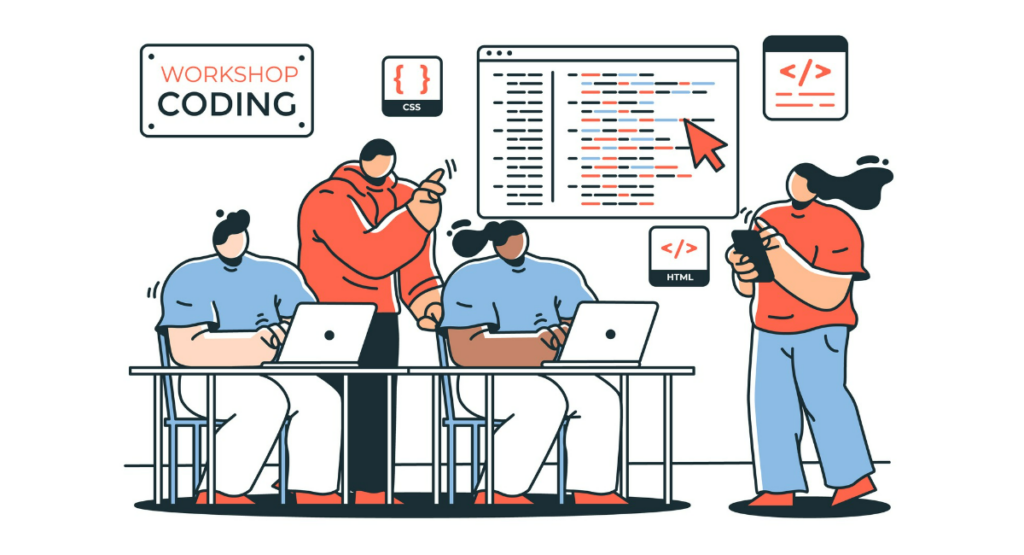An essential tool for both developers and designers, CSS frameworks ease the process of web development and ensure consistency across different platforms.
Such frameworks provide a quick and standardized way of building responsive and beautiful-looking websites, without having to redesign/redevelop everything from scratch for each new project.
It is easy to use CSS frameworks since they have a predefined set of classes and conventions. It helps reduce development time and increases productivity drastically.
Whether you're building a simple website or a complex web application, the correct CSS framework will make a huge difference in your workflow and in the quality of the final product that you deliver.
Understanding CSS Frameworks

What are CSS frameworks?
A CSS framework is a collection of prewritten, standardized CSS that assists developers or designers in the fast styling of HTML elements to achieve uniform and effective web designs.
Such frameworks provide base structures and other elements, like buttons, forms, and typography, that are readily built into their respective systems and can be further customized at one's will.
It facilitates the easy development of responsive and cross-browser-compatible websites by following the latest web standards and best practices.
Importance of using CSS frameworks
Using CSS frameworks in web design and development brings numerous benefits. They significantly speed up the development process by providing a robust base to build upon, minimizing the need for writing repetitive code.
This efficiency allows developers to focus more on refining user experiences and optimizing website functionality.
Additionally, CSS frameworks ensure that websites are responsive and perform well on a variety of devices and screen sizes, an essential factor in today’s mobile-centric world.
Using these tools also promotes consistency in design, which can enhance brand recognition and user navigation.
Top 5 CSS Frameworks for Developers and Designers
Bootstrap
One of the most popular CSS frameworks in use today, Bootstrap is known for a long list of components and its robust grid system, which makes the building of responsive and mobile-first websites quite easy.
Its lively community and rich resources available the huge collection of themes and plugins, in particular make Bootstrap a reliable choice across many projects.
Foundation
Designed by ZURB, Foundation is another leading CSS framework known for its flexibility and advanced responsive capabilities. It’s particularly favored for complex web applications that require a more adaptive approach.
Foundation provides an array of customization options and is focused on providing a seamless experience across all device types, including accessibility features for users with disabilities.
Bulma
Bulma is a modern CSS framework that stands out due to its purely CSS-based design (no JavaScript components), making it lightweight and easy to integrate.
Its simple syntax and strong focus on mobile-first design make it highly attractive for developers looking for a straightforward yet powerful tool.
The framework's basis on Flexbox ensures a high level of flexibility in design and layout choices.
Materialize
Materialize is a responsive front-end framework based on Material Design principles by Google. It provides components that have a clean and contemporary look, ensuring elegant user interfaces that adhere to the sharp design standards of Material Design.
Materialize is especially good for developers wanting to imbue their projects with depth, using shadows, and grid-based layouts.
Tailwind CSS
Unlike other frameworks that provide predefined components, Tailaind CSS opts for a highly customizable, utility-first approach.
This means developers can style elements directly in their HTML, leading to faster development times and more control over the appearance without digging through complex CSS files.
Tailwind CSS's emphasis on customization allows developers to create a unique look without the constraints of predefined components.
How to Choose the Right CSS Framework for Your Project

Factors to Consider
Choosing the right CSS framework for your project is crucial to the success of your web development or design efforts. When deciding which framework to use, consider the following factors:
- Project Requirements: Identify what specific UI components your project needs. Does the framework support complex grids, modals, or tabs?
- Ease of Use: Evaluate how easy it is to learn and implement the framework. Consider if there’s adequate documentation and community support.
- Responsiveness: Ensure the framework meets your needs for different device sizes. Responsive design should be a key factor in your choice.
- Customization: Choose a framework that allows you to customize easily without having to override too much of its core.
- Performance: Consider the CSS file size and how it impacts the load time of your site. Heavier frameworks can lead to slower websites.
Comparison Guide
To make an informed decision, here is a quick comparison guide of popular frameworks:
- Bootstrap: Offers extensive components and is great for beginners but can be quite heavy.
- Tailwind CSS: Highly customizable and utility-first making it ideal for precise designs but has a steep learning curve.
- Foundation: Provides advanced responsiveness and professional-grade tools but less community support than Bootstrap.
- Bulma: Lightweight and purely CSS (no JavaScript involved) which is perfect for simple projects that need fast load times.
- Semantic UI: Integrates well with React and other JavaScript frameworks but is heavier and more complex.
Implementing CSS Frameworks in Your Projects
Best Practices for Using CSS Frameworks
Using CSS frameworks effectively can streamline your workflow and enhance your project’s aesthetic. Follow these best practices:
- Stick to the Documentation: Before deviating too much from the framework’s standards, be familiar with its documentation.
- Keep It Simple: Use the framework as a base. Do not over-style, which can lead to slower websites and harder maintenance.
- Test Responsiveness: Regularly test your project on different devices to ensure the framework’s responsive utilities perform as expected.
- Stay Updated: Keep the framework up to date to benefit from the latest features, performance improvements, and security patches.
Tips for Customization
Customizing a CSS framework helps set your project apart. Here are some tips to do it right:
- Use a Preprocessor: Sass or LESS can make managing your CSS code easier. Customize the framework's variables from the start.
- Override with Caution: When you need to override the framework’s styles, do it in a separate CSS file to keep track of changes and maintain the integrity.
- Utilize Framework Extensions: Some frameworks have extensions or plugins specifically for extending functionality. Use these to enhance customization without reinventing the wheel.
- Experiment in Development: Test any significant changes in a development environment first to avoid disrupting your live site.
By considering these aspects, you can effectively choose and implement a CSS framework that not only meets the requirements of your project but also enhances its quality.
Advantages and Disadvantages of Using CSS Frameworks
Pros of using CSS frameworks
Using CSS frameworks can significantly enhance the efficiency and quality of web development projects. One major advantage is the speed of development.
Frameworks provide pre-written CSS classes that can be used to construct complex designs quickly without the need to write code from scratch.
This will not only help quicken the turn-around time for projects but will also ensure a high amount of consistency over the web pages. Some CSS frameworks also contain features for responsive design, enabling creation of websites that go well on both desktop and mobile devices.
Another benefit is the community and support often found around popular frameworks. Users can access extensive documentation, tutorials, and forums which can be incredibly helpful for troubleshooting and learning new aspects of web design.
Cons of using CSS frameworks
On the other hand, not all benefits go to these CSS frameworks; they have some drawbacks. They can increase file size; wherein in most of these frameworks, there is much pre-written code that might not be used on certain projects.
This results in slower loading time and affects performance. Other disadvantages are that there is a danger of cookie-cutter designs, where websites start to look similar from the outset use of framework elements.
What is more, the reliance on a framework can sometimes limit the developer with creativity and understanding of the base CSS when they can choose to modify framework elements and not create custom designs that would fit their needs more precisely.
This may, at times, be really tricky and further demanding in time and resources for the sake of compatibility and unleashing new features.
Book a Demo and experience ContextQA testing platform in action with a complimentary, no-obligation session tailored to your business needs.
Conclusion and Final Thoughts on CSS Frameworks
Choosing the right CSS framework is very important for any efficient and effective web development.
From complex enterprise applications to light overtures of a website, these frameworks include Bootstrap, Tailwind CSS, Foundation, Bulma, and Materialize.
Each framework has its unique strengths: Bootstrap's deep component libraries, Tailwind CSS' utility-first customization, Foundation's strong case for accessibility, Bulma for modern interface design, and Materialize for material design principles.
Based on the needs of the projects, the expertise of the team, and future maintenance plans, choose a framework that really aligns with your web development goals.
The right framework will improve the development process in many ways, enhancing team productivity and user experience of the site.
Also Read - Selenium Wait Commands: Implicit, Explicit, and Fluent Wait
